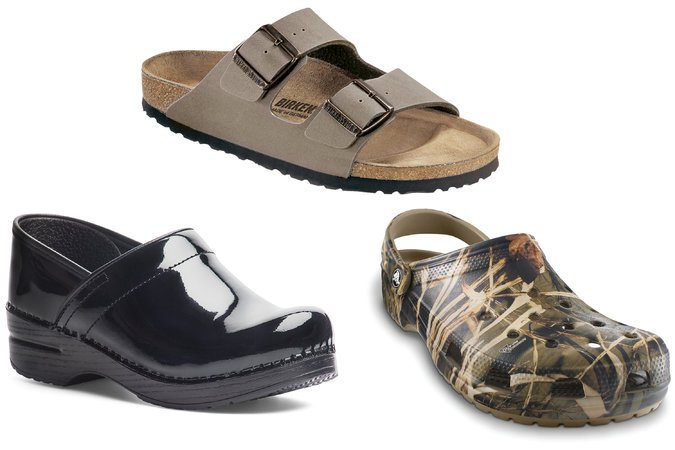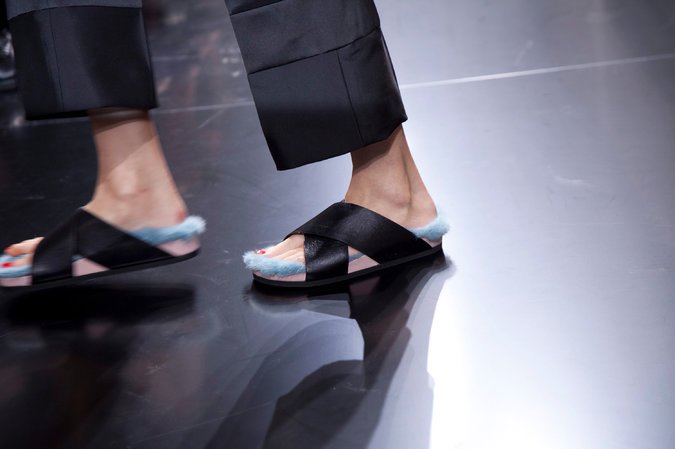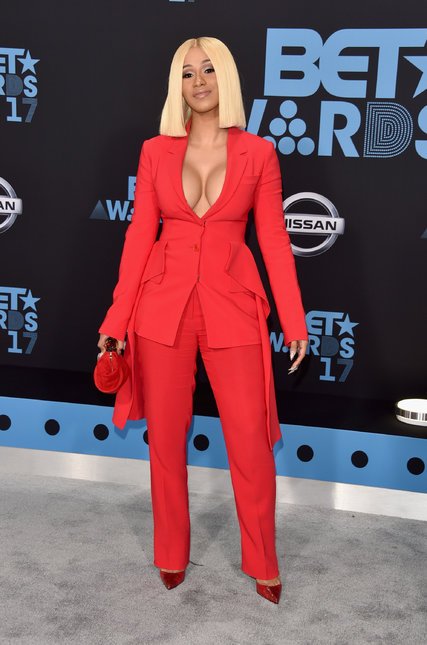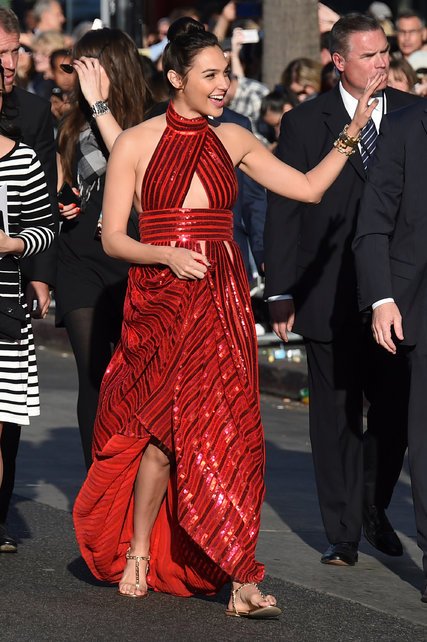There was a time when a pair of pumps was a marker of female adulthood; a crucial component of the Dress for Success wardrobe and a sign of sexual maturity (this is why a surge of high heels in girls’ sizes a few years ago raised some eyebrows).
But our preferences have shifted dramatically toward athletic and comfort shoes in recent years. Allbirds, a brand of merino wool “runners,” are now part of the unofficial Silicon Valley uniform (the venture capitalist Mary Meeker is a fan), and the company plans to expand its retail presence after a successful second round of funding. It’s not uncommon to see Danskos and Crocs, mainstays of restaurant kitchens and hospitals, worn by white-collar professionals. Birkenstock’s two-strap Arizonas, once derided as hippie shoes, have been imitated by designer labels like Prada, Céline, Givenchy and Coach. Now Birkenstock holds fashion shows in Paris.

At the avant-garde retail temple Opening Ceremony, which opened in 2002, fanciful sneakers, slippers and oxfords greatly outnumber high heels. Eree Kim was a designer there for four years before forming her own comfort-shoe company, Hopp Studios.
“I always had trouble finding shoes that were comfortable but also aesthetically what I wanted,” Ms. Kim said.
She sees shoes as a means of both self-expression and self-defense. “If I know that I have to take the subway home late at night, I want to be dressed appropriately,” she said, adding that during the time she’s lived in New York, she’s been attacked twice.
“Men have no clue that this is something a lot of women think of,” she said.
Uncertainty can subconsciously influence the way people dress, too. On Monday night, at the department store Century 21’s downtown location near the World Trade Center, three young Canadian tourists — Jasveen Kang, Kirndeep Nahal and Deepinder Nahal — were waiting for an Uber to pick them up after a long day of walking in utilitarian black boots.

They had woken up to the news of a crude pipe bomb explosion at Port Authority, across the street from their hotel in Times Square.
Advertisement
Continue reading the main story
They had ignored the rows of dressy shoes with heels. Kirndeep, 29, reasoned that New Yorkers might gravitate toward “something that’s comfortable to run in, something that you could get to safety in, that wouldn’t impede you in any way.”
From Louis XIV to Louboutins
High heels have a long and not always feminized history.
They were pioneered by horse owners in 15th-century Persia. Heels helped them stand up and stabilize in stirrups so they could shoot their bows with greater accuracy.
Because of their connection to sport and wealth, heels went on to become a signifier of social class in Western Europe. During the Renaissance, heels and platforms could give men a competitive advantage among their shorter peers, as well as elevate them from the streets, where people poured out their chamber pots. Courtesans soon adopted them as a status symbol, wearing extra-high chopines, or platforms, to tower above other court members in a symbolic show of sexual dominance.
Women throughout the European courts began to adopt high heels in the 16th century. Catherine de Medici wore heels to her wedding in 1533. Queen Elizabeth I favored them over other footwear.
By the late 17th century, it wasn’t uncommon to see men in four-inch heels. Long before Cardi B received her first pair of Louboutins, Louis XIV wore five-inch red heels and decreed that the early “red bottoms” would be worn only by members of the royal court.
In the 18th century, flatter shoes became the preferred style. Heels re-emerged as a trend at the end of the 19th century for women only. The first American high-heel factory opened in 1888, and this “antiquated fashion,” responsible for many podiatric and orthopedic ailments, surged.
As Prohibition and temperance reform swept the United States in the 1920s, high heels became a topic of legislation. A Utah bill proposed that heels higher than one and a half inches would be met with, at a minimum, a $25 to $500 fine, and possibly jail time up to one year.
Though they’re no longer punished by law for their footwear choices, women in the public eye are still defined by whether they do or don’t wear heels — certainly any woman walking alone on the street, but first ladies as well. A 1959 article in this newspaper proclaimed that “Pat Nixon’s political trademark around the world might well be her high heels.” Ahead of a trip to the Soviet Union with her husband, then vice president, a friend suggested that Mrs. Nixon pack a pair of “sensible walking shoes.” Her response? “I’ve worn high heels in a lot rougher places.”
Advertisement
Continue reading the main story
So too might have been the response of Melania Trump, who earlier this year was mocked on social media for boarding Air Force One in stilettos on her way to survey Hurricane Harvey’s damage in Texas.

While she goes high, others in her position have often gone low with their heels. Michelle Obama was both praised and pilloried for her sensible shoes. Jacqueline Kennedy Onassis also favored less-precarious footwear: square-toe flats, riding boots and kitten heels.
The first lady made her taste very clear in a letter to Marita O’Connor, a personal shopper for Bergdorf Goodman, who had sent her a selection for the Inaugural Ball: “Your shoes arrived today and I am sorry to say that I do not really like any of them. They have that vamp which I do not like.”
Still, for many women, “that vamp” is just what they seek. This year’s breakout hip-hop star, Cardi B, has become synonymous with the Louboutins she raps about in “Bodak Yellow.”

In an interview with Billboard, the rapper’s stylist Kollin Carter explained the appeal of the red-soled stilettos to women like Cardi B: “Where she’s from, when girls are ready to get dressed up that’s what you wear. And in real life, before ‘Bodak’ blew up, she wore red bottoms because that’s what it means to make it in the Bronx. It’s a status symbol that the masses can relate to; everyday girls work hard and save up their money to have that shoe.”
Worn to Run
Louboutins and other high-end heels signify wealth and can lend confidence to the women who can afford them. They are also “a way to literally try to make your body look more like the cultural body ideal,” said Renee Engeln, a professor of psychology at Northwestern University and the author of the book “Beauty Sick.” “They’re to lengthen your legs and change the way your shape looks from behind. That’s not accidental.”
That’s what Christian Louboutin meant when he told The New Yorker, “The core of my work is dedicated not to pleasing women but to pleasing men.”
Valerie Steele, the director and chief curator of the Museum at the Fashion Institute of Technology, says that heels are here to stay. “High heels are the number-one sartorial symbol of erotic femininity, and that’s not changing anytime soon,” she said.

But Ms. Steele agreed that periods of heightened anxiety can affect the shoes women wear — our preferences change with history. In 2000, this newspaper wrote that heels were in demand “as never before.” By the end of the following year, Ms. Steele said, flats and sneakers had become ubiquitous in the wake of the Sept. 11 attacks. And a year after that, the kitten heel crept back, as it periodically does.
Advertisement
Continue reading the main story
“The one hard-and-fast rule in fashion is that if it swings in one direction, it will swing back in the other direction,” Ms. Steele said.
The cohort of high-profile high-heel naysayers is vocal today. Gal Gadot wore flats throughout her “Wonder Woman” press tour earlier this year. Serena Williams paired her Sarah Burton for Alexander McQueen wedding gown with custom bedazzled Nikes. And ahead of Cannes in May, Kristen Stewart spoke out against the film festival’s no-flats rule, installed in 2015. “If you’re not asking guys to wear heels and a dress,” she told the Hollywood Reporter, “then you cannot ask me either.” (She wore heels. But still!)
When asked why she ditched heels during the film’s promotion, Ms. Gadot told USA Today that it was a matter of health and safety. “I love wearing high heels — I think it’s beautiful, it’s sexy, whatever,” she said. “But at the same time, especially stilettos, it puts us out of balance. We can fall any minute. It’s not good for our backs. Why do we do it?”
Similar questions inform Prof. Engeln’s research. “Why do the things we do for ourselves have to hurt?” she asked. “Why do the shoes we choose for ourselves make us less able to run away if we need to run away? You only need to spend a few minutes on the internet these days to see that, yes, there are quite a lot of times when, unfortunately, it would help to be able to run. Why do the things that we do supposedly for ourselves cause us long-term physiological damage?”
Last year, in The New Yorker, the writer Mary Karr called for the uninvention of high heels. It seems more likely that they will be reinvented. Two companies led by women have developed ergonomic high heels whose insoles are designed to promote stability and even weight distribution, and prevent heel-related hospital visits (provoking, for those of a certain age, amused memories of the Easy Spirit “Looks Like a Pump, Feels Like a Sneaker” commercial, echoed in a 2014 McDonald’s commercial that featured a group of women dribbling a soccer ball in platform heels).
In the film “Jurassic World” starring Bryce Dallas Howard, her character outruns a Tyrannosaurus rex in high heels.
But in the sequel, she’s given a solid pair of boots.
If Ms. Hutchinson has her way — she will receive a verdict on her emoji proposal in January — the high heel as a signifier of femininity will soon be going the way of the dinosaur. She spoke of the ballet flat as an artifact, positioning it alongside another emoji candidate for 2018: the brick wall.
“If you’re a historian in 50 years time, and you start going through emoji with a fine-tooth comb, you’ll be able to say, this brick wall must have happened in 2017,” she said. “You can look at the flat shoe and say that was the year women decided to find their voice and collectively protest gender-stereotypical norms.”
Continue reading the main story
Article source: https://www.nytimes.com/2017/12/16/fashion/the-end-of-high-heels.html?partner=rss&emc=rss
Speak Your Mind
You must be logged in to post a comment.